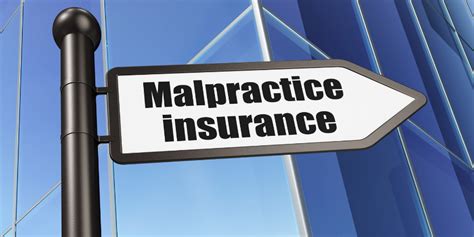Liability Insurers

Liability insurance is a vital component of the modern risk management landscape, providing individuals and businesses with a crucial safeguard against potential financial losses arising from legal liabilities. This comprehensive guide delves into the world of liability insurers, exploring their pivotal role, the various types of liability insurance, and the intricate dynamics of this essential industry.
Understanding the Role of Liability Insurers

Liability insurers are specialized entities that offer protection to policyholders against financial claims and legal liabilities. They provide a safety net, ensuring that individuals and businesses can navigate the complex and often unpredictable world of legal responsibilities with a measure of financial security.
The fundamental principle of liability insurance is straightforward: policyholders pay premiums to the insurer, who in turn assumes the risk of potential legal liabilities. This transfer of risk is a cornerstone of the insurance industry, providing a valuable service to those seeking protection against the unforeseen.
The role of liability insurers is not merely transactional; it extends into the realm of risk management and strategic planning. By offering tailored insurance solutions, insurers help policyholders anticipate and mitigate potential risks, thereby contributing to a more stable and predictable business environment.
Types of Liability Insurance

Liability insurance is a diverse field, catering to a wide range of potential risks and liabilities. Here’s an overview of some of the key types of liability insurance:
General Liability Insurance
General liability insurance is a broad-spectrum policy that covers a range of common risks faced by businesses and individuals. This includes bodily injury, property damage, and personal and advertising injury. It’s a vital component of risk management for many entities, providing protection against a wide array of potential claims.
Product Liability Insurance
Product liability insurance is designed specifically for manufacturers, distributors, and retailers. It covers the potential liabilities arising from defective products, ensuring that businesses can continue to operate even in the face of product-related lawsuits. This type of insurance is particularly crucial in industries where product safety is a key concern.
Professional Liability Insurance (Errors & Omissions)
Professional liability insurance, also known as errors and omissions (E&O) insurance, is tailored for professionals such as consultants, lawyers, accountants, and other service providers. It protects against claims of negligence, errors, or omissions that may arise during the course of business. E&O insurance is essential for maintaining the reputation and financial stability of professionals in various industries.
Cyber Liability Insurance
In the digital age, cyber liability insurance has become increasingly important. It provides coverage for losses arising from cyber incidents such as data breaches, hacking, and cyber extortion. With the ever-growing reliance on digital systems and data, this type of insurance is vital for businesses seeking to protect their digital assets and reputation.
Environmental Liability Insurance
Environmental liability insurance is designed to cover the costs associated with environmental damage or pollution. It’s particularly relevant for businesses operating in industries with high environmental risks, such as manufacturing or energy production. This insurance helps mitigate the financial impact of environmental liabilities and ensures compliance with environmental regulations.
The Process of Liability Insurance
The process of acquiring liability insurance involves several key steps, each of which is crucial to the overall effectiveness of the policy. Here’s a breakdown of the typical process:
Risk Assessment
The first step in obtaining liability insurance is a comprehensive risk assessment. This involves a detailed evaluation of the potential risks and liabilities faced by the policyholder. The insurer will consider factors such as the nature of the business, industry-specific risks, historical data, and the policyholder’s risk management strategies.
Policy Customization
Based on the risk assessment, the insurer will customize a policy to meet the specific needs of the policyholder. This involves selecting the appropriate type of liability insurance, determining the coverage limits, and adding any necessary endorsements or riders to tailor the policy to the unique circumstances of the policyholder.
Underwriting
Underwriting is a critical phase in the liability insurance process. It involves a detailed review of the policy application, including financial statements, loss history, and other relevant information. The underwriter will assess the risk profile of the policyholder and determine the premium based on the perceived level of risk.
Policy Issuance
Once the underwriting process is complete and the policy terms are agreed upon, the insurer will issue the liability insurance policy. This document outlines the specific coverage, exclusions, and conditions of the policy, providing a clear understanding of the protection provided.
Claims Handling
In the event of a claim, the liability insurer will handle the process, ensuring a smooth and efficient resolution. This involves investigating the claim, assessing the validity and extent of the liability, and determining the appropriate course of action, which may include settlement, defense, or denial of the claim.
Industry Dynamics and Future Trends
The liability insurance industry is dynamic and constantly evolving, driven by changes in technology, regulation, and societal trends. Here are some key factors shaping the future of liability insurance:
Technological Innovations
Advancements in technology are transforming the liability insurance landscape. From digital underwriting and claims processing to the use of artificial intelligence for risk assessment, technology is enhancing efficiency and accuracy in the industry. Additionally, the rise of digital businesses and the Internet of Things (IoT) presents new risks and opportunities for liability insurers.
Regulatory Changes
Regulatory environments play a significant role in shaping the liability insurance industry. Changes in laws and regulations, particularly those related to product safety, environmental standards, and data privacy, can have a direct impact on the types of liabilities insurers must cover. Staying abreast of these changes is crucial for insurers and policyholders alike.
Rising Litigation Costs
The cost of litigation is on the rise, with complex and lengthy legal battles becoming increasingly common. This trend is putting pressure on liability insurers to provide robust coverage while also managing the increasing costs associated with legal defense and settlements. Insurers are adapting their strategies to mitigate these rising costs.
Changing Risk Landscape
The risk landscape is continually evolving, with new threats emerging and existing risks transforming. From climate change-related liabilities to the rise of cyber risks, insurers must stay vigilant and adaptable. This involves ongoing research and analysis to anticipate and manage these evolving risks effectively.
The Impact of Insurtech
Insurtech, the intersection of insurance and technology, is disrupting traditional insurance models. Insurtech startups are offering innovative solutions, such as parametric insurance and on-demand coverage, which challenge the status quo. While these innovations present opportunities, they also pose challenges for established liability insurers.
Conclusion: Navigating the Liability Landscape

Liability insurers play a pivotal role in managing risk and ensuring financial stability for individuals and businesses. By understanding the diverse types of liability insurance and the intricate process of policy issuance, policyholders can make informed decisions to protect their interests. As the industry evolves, staying abreast of emerging trends and innovations is essential for both insurers and policyholders to navigate the complex liability landscape effectively.
What is the primary purpose of liability insurance?
+Liability insurance primarily serves to protect individuals and businesses from financial losses arising from legal liabilities. It provides a safety net, ensuring that policyholders can manage potential claims and lawsuits without compromising their financial stability.
How does liability insurance differ from other types of insurance?
+Liability insurance is distinct from other types of insurance in that it covers financial liabilities arising from legal claims, rather than direct losses or damages. It’s a critical component of risk management, offering protection against a wide range of potential legal risks.
What are some common exclusions in liability insurance policies?
+Common exclusions in liability insurance policies include intentional acts, contractual liabilities, pollution (unless specifically covered), and criminal acts. It’s important to carefully review the policy exclusions to ensure comprehensive coverage.
How can policyholders ensure they have adequate liability coverage?
+Policyholders can ensure adequate liability coverage by conducting a thorough risk assessment, working closely with their insurance broker or agent, and regularly reviewing their policy to ensure it aligns with their evolving needs and risks.



